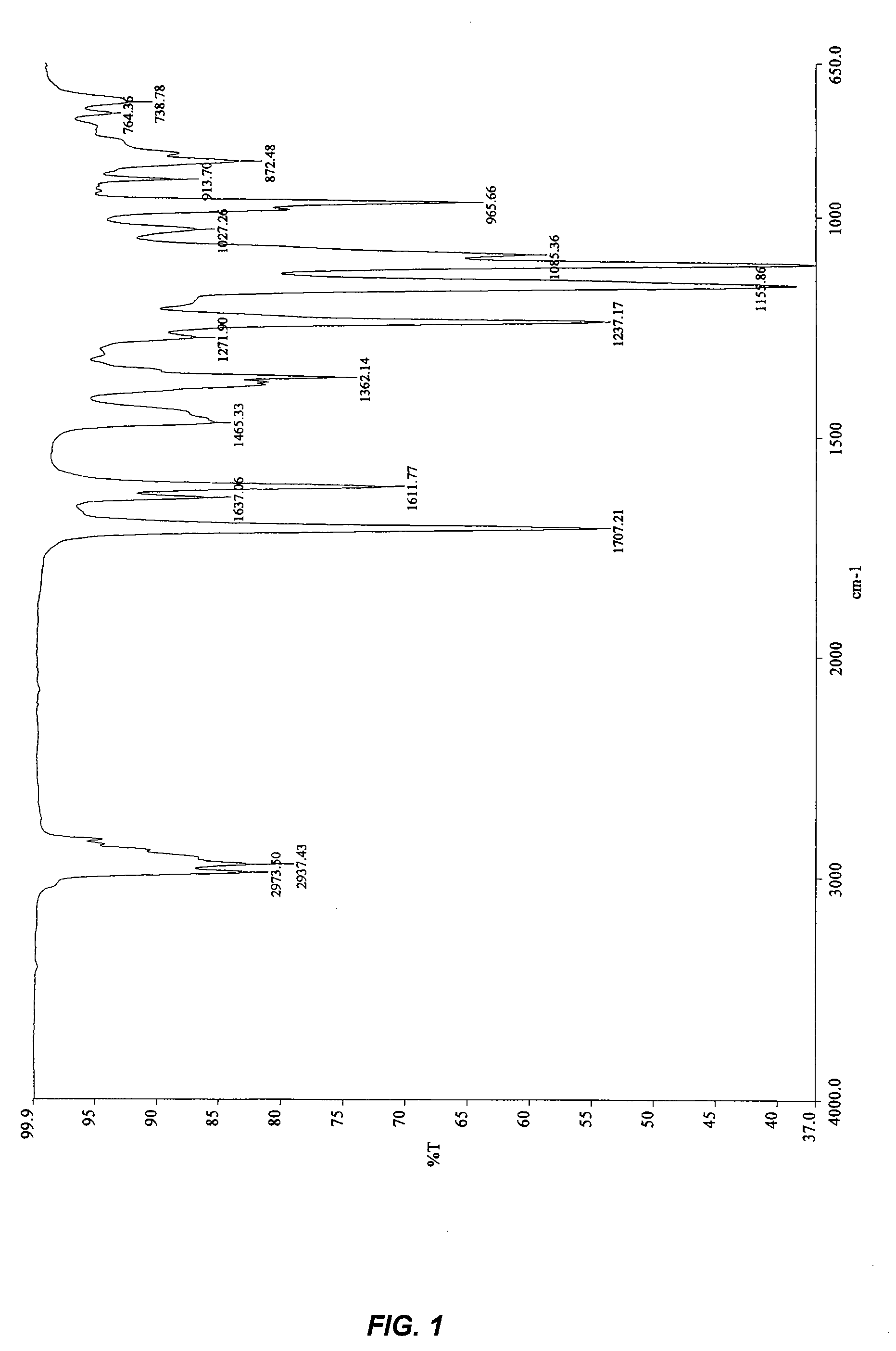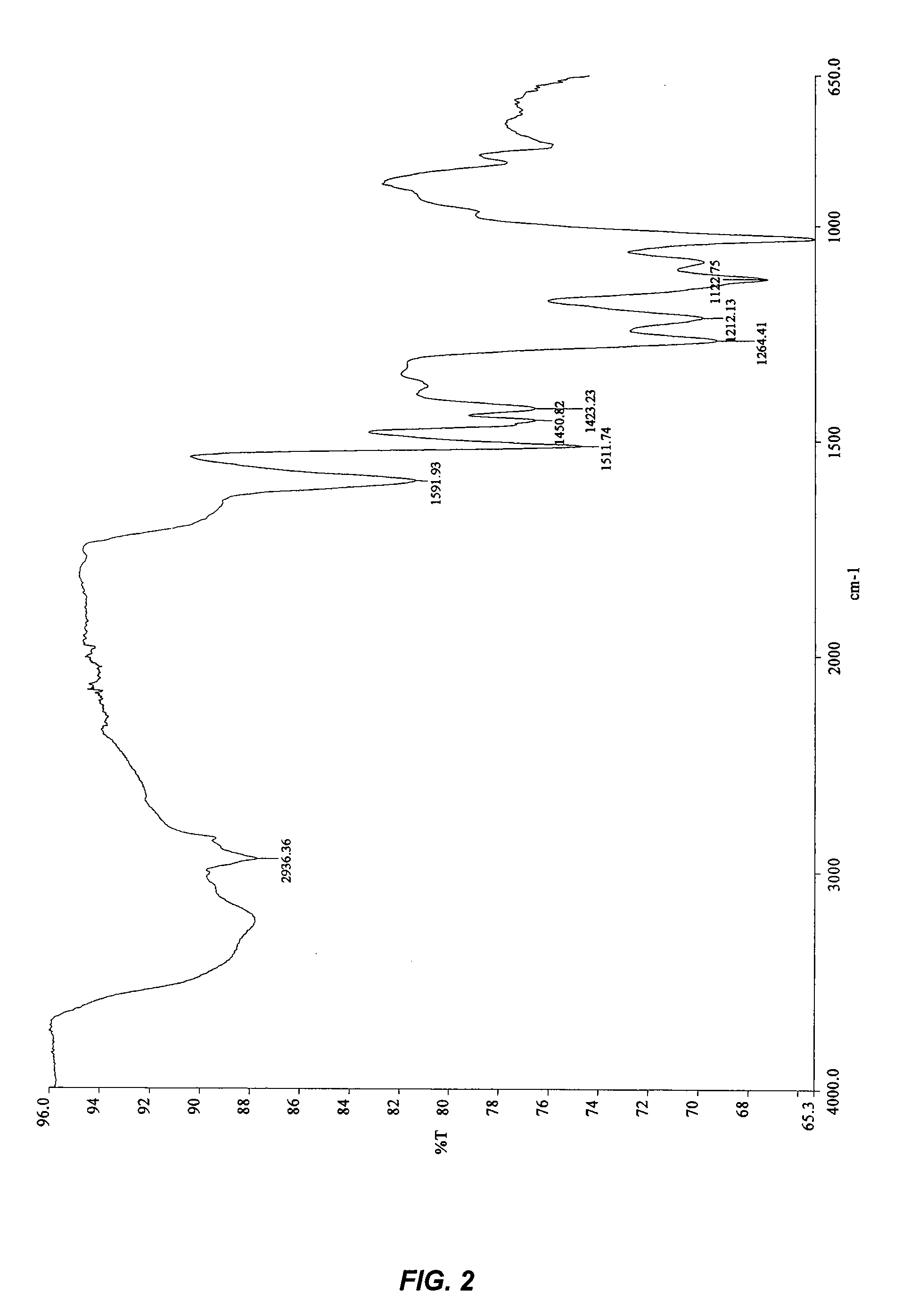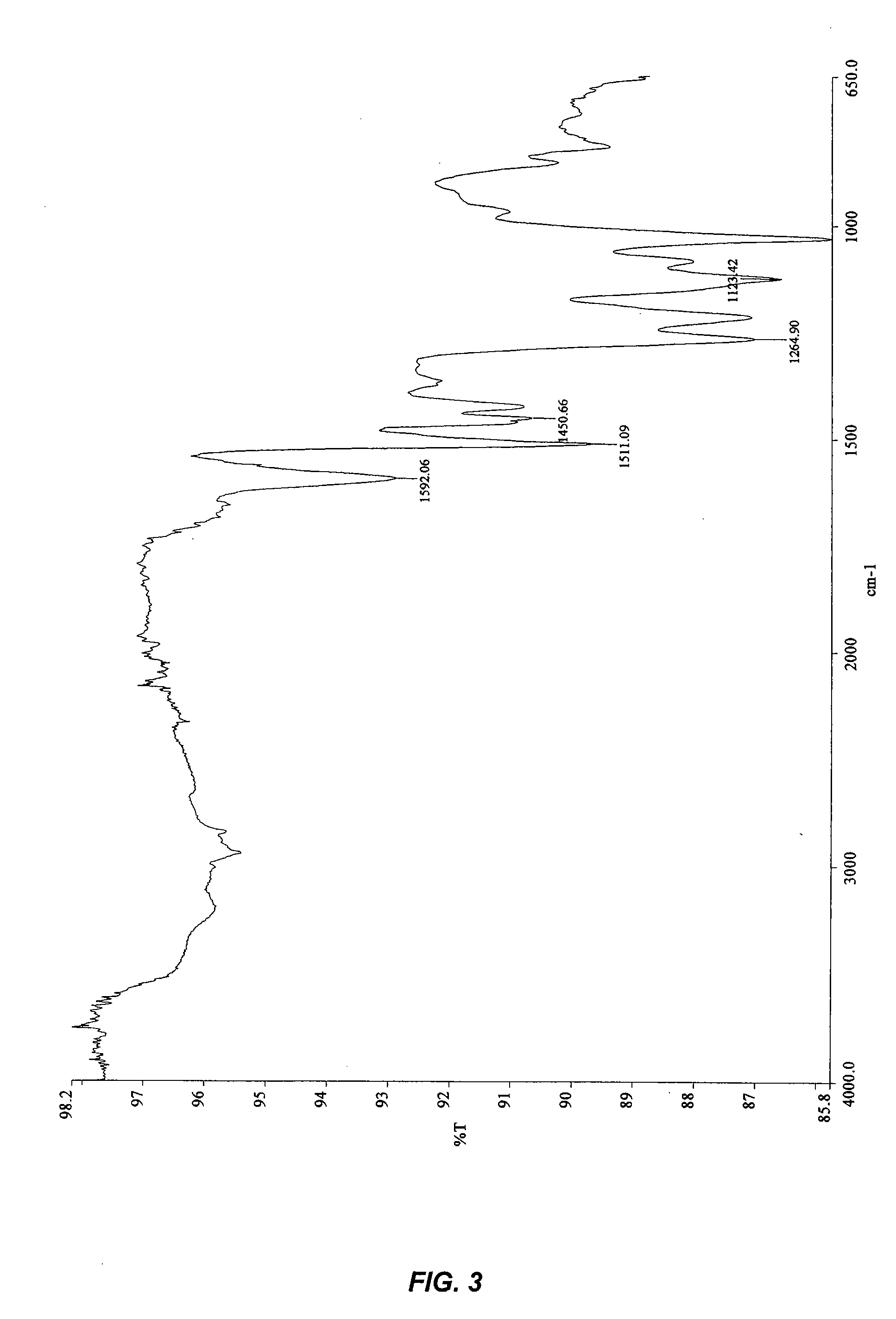Feed-through lignin-pesticide compositions
a technology of lignin and composition, applied in the field of feed-through ligninpesticide composition, can solve the problems of horn flies being especially susceptible to inventive feed, and achieve the effects of reducing insect infestation, treating, controlling, and/or preventing
- Summary
- Abstract
- Description
- Claims
- Application Information
AI Technical Summary
Benefits of technology
Problems solved by technology
Method used
Image
Examples
example 1
Determination of Maximum Amount of Active Agent to Pass into the Manure of Chickens
[0125]This example illustrates a determination of the maximum concentration of any active agent that will pass into the manure of chickens.
[0126]Briefly, chicken feed was formulated using a pulverized cattle bolus which contained barium in the form of BaSO4. Table 1 shows the amount of barium expressed as a percentage in the feed or in the manure at 4, 24, 48, and 72 hours after feeding.
TABLE 1Amount of barium found in the feed and in the manure of chickens.Amount of Barium% in% found in manure at given timesFormulationFeed4 hr.24 hr.48 hr.72 hr.Barium0.093%0.00165%0.0455%0.0557%0.0471%(as BaSO4)from 491-101w / bolus% of initial 100% 1.78% 48.90% 59.90% 50.60%BaSO4
[0127]This study shows that the maximum concentration of any active agent (e.g., pesticide) that will pass into the manure of a chicken is about 50% of the applied dose in the feed. Without being bound to any particular theory, it is thought...
example 2
Characterization of Lignin-Methoprene Formulations in Chickens
[0128]This example illustrates a study in chickens comparing several inventive formulations containing lignin-methoprene complexes with various control formulations.
[0129]Briefly, chicken feed was formulated with the inventive lignin-methoprene complexes described herein. Formulations containing lignin and charcoal, lignin complexes, lignin-mineral wax complexes, or free methoprene and lignin were used as controls. Table 2 shows several advantageous characteristics of the lignin-methoprene formulations of the present invention. For example, a substantially greater amount of methoprene was recovered from the manure of chickens that were fed formulations containing lignin-methoprene complexes (31.1-53.1%) than in the manure of chickens that were fed control formulations (9.4-20.0%). In addition, chickens that were fed formulations containing lignin-methoprene complexes produced manure that virtually eliminated the emergence...
example 3
Characterization of Lignin-Methoprene Formulations in Cats
[0130]This example illustrates a study in cats comparing an inventive formulation containing lignin-methoprene complexes with a formulation containing free methoprene.
[0131]Briefly, cats were fed two formulations of treated food to determine if the lignin-methoprene complex improved the pass through effect of methoprene as compared to free methoprene. Three cats were fed the formulations for a week and their manure was tested every 24 hours. Table 3 shows the amount of methoprene recovered from each cat for the two formulations.
TABLE 3Amount of methoprene found in the manure of cats fed either a freemethoprene or a lignin-methoprene formulation.Cat food treated withCat food treated withLignin-MethopreneFree Methoprene Lot #Complex491-166Lot # 491-165@ 36.2 ppm@ 40.7 ppmCalculatedCalculatedSampleMethopreneMethopreneHourname(ppm)*(ppm)*Day 0Q00(0 hr)S00T00Day 1Q0.6Day 139.3Day 1(24 hr)S0.7Avg.33.7Avg.T0.60.63 ppm43.238.7 ppm(1....
PUM
| Property | Measurement | Unit |
|---|---|---|
| weight loss | aaaaa | aaaaa |
| temperature | aaaaa | aaaaa |
| temperature | aaaaa | aaaaa |
Abstract
Description
Claims
Application Information
 Login to View More
Login to View More - R&D
- Intellectual Property
- Life Sciences
- Materials
- Tech Scout
- Unparalleled Data Quality
- Higher Quality Content
- 60% Fewer Hallucinations
Browse by: Latest US Patents, China's latest patents, Technical Efficacy Thesaurus, Application Domain, Technology Topic, Popular Technical Reports.
© 2025 PatSnap. All rights reserved.Legal|Privacy policy|Modern Slavery Act Transparency Statement|Sitemap|About US| Contact US: help@patsnap.com



